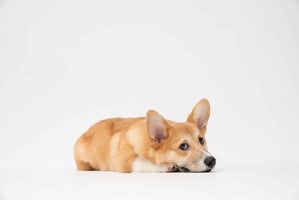It’s natural for dogs to chew on things, but it can become a problem when they start to chew on...
How to Stop a Dog from Chewing on Things
Training a puppy or adult dog to stop chewing on furniture, toys, or other items can be a challenge. It requires patience, understanding, and a strategy to get the desired results. This article will provide tips and advice on how to get a dog from chewing on things and offer solutions to common problems associated with this behaviour.
Understanding Why Dogs Chew
Chewing is a normal behaviour for dogs, and it’s important to understand why they do it. Puppies tend to chew in order to explore their environment and relieve pain when teething. Adult dogs may chew on objects out of boredom, anxiety, or to satisfy a nutritional deficiency. It’s important to figure out why your dog is chewing before attempting to stop the behaviour.
If your dog is chewing due to boredom, it’s important to provide plenty of mental stimulation. This can be achieved with puzzle toys, interactive games, and physical activities like fetch. If your dog is chewing due to anxiety, it’s important to find ways to reduce their stress levels, such as providing a safe space and plenty of exercise.
Provide Appropriate Chew Toys
Providing appropriate chew toys is a great way to encourage your dog to chew on the right things. Be sure to choose toys that are safe and durable, and make sure they are the right size for your dog. Chew toys should also be rotated regularly to prevent your dog from getting bored.
It’s also important to provide a variety of chew toys, as different textures and shapes can help keep your dog interested. Soft chew toys are great for teething puppies, while harder toys are better for adult dogs. You can also stuff toys with treats to make them more enticing.
Discourage Chewing on Unacceptable Items
Discouraging your dog from chewing on unacceptable items is an important part of training. When you catch your dog chewing on something they shouldn’t, it’s important to remain calm and redirect their attention to an appropriate chew toy. It’s also important to remove the item from your dog’s reach and make sure it’s inaccessible.
It’s also important to teach your dog the “leave it” command, which can be used to prevent your dog from picking up items they shouldn’t. To teach this command, start by holding a treat in your hand and telling your dog “leave it”. When your dog stops trying to take the treat, reward them with a treat from your other hand.
Keep Your Dog Occupied
Keeping your dog occupied is an important part of preventing chewing. Make sure your dog has plenty of things to do, such as playing with toys, going for walks, and interacting with other dogs. You can also try giving your dog interactive toys, such as food puzzles and treat dispensers, which can help keep them occupied for longer periods of time.
You can also give your dog frozen treats. Fill a Kong toy with peanut butter or wet dog food, then freeze it overnight. This can help keep your dog occupied for hours and can also help to relieve teething pain in puppies.
Provide Positive Reinforcement
Positive reinforcement is an effective way to train your dog and encourage them to chew on appropriate items. Whenever your dog chews on an acceptable item, be sure to reward them with a treat or praise. This will help reinforce the behaviour and make it more likely that your dog will continue to chew on appropriate items.
It’s also important to be consistent with your training. If you only reward your dog for chewing on appropriate items some of the time, they may become confused and frustrated. It’s important to be consistent and reward your dog every time they chew on an acceptable item.
Seek Veterinary Advice
If your dog’s chewing behaviour is extreme or if you’ve tried all of the above methods and are still having trouble, it’s important to seek advice from your veterinarian. They can help you identify any underlying medical issues that may be causing the behaviour and provide advice on how to manage it.
In conclusion, understanding why your dog is chewing is the first step in getting them to stop. Providing appropriate chew toys, discouraging chewing on unacceptable items, keeping your dog occupied, and providing positive reinforcement can all help to reduce the behaviour. If all else fails, it’s important to seek advice from your veterinarian.



